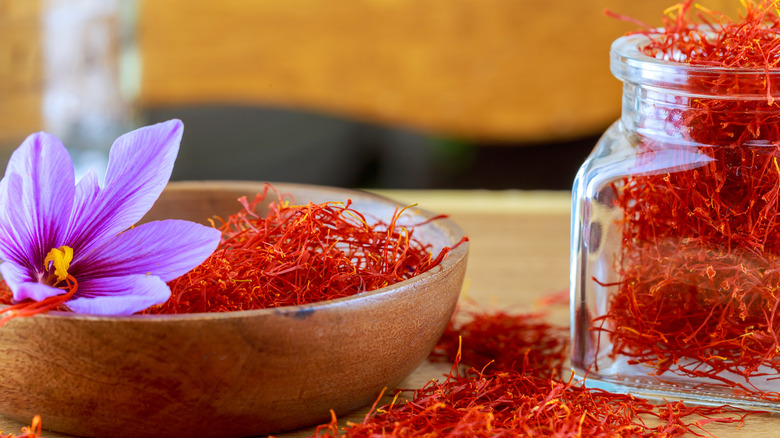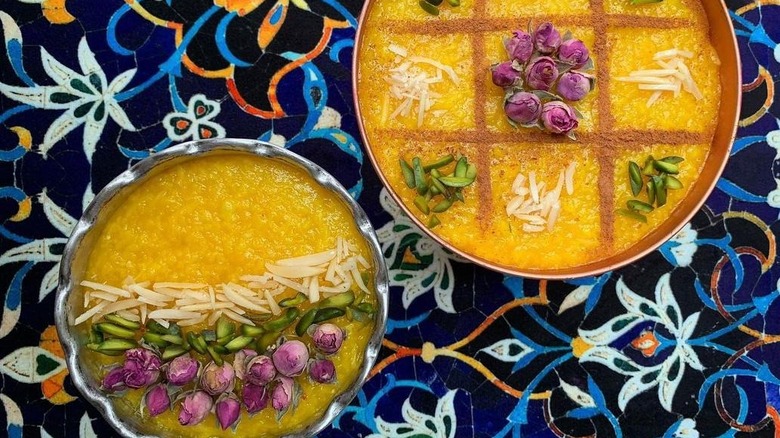Why You Should Always Keep Saffron In Your Pantry
Saffron is one of the most expensive, rare herbs and one of the most coveted for its incredible aroma and flavor. The Daily Mail reports that just 1 gram or 0.035 ounces of authentic saffron can run $90! That makes it more expensive than gold.
Saffron is derived from a fussy crocus plant that can be difficult to cultivate and is susceptible to climate fluctuations. The flower grows in the hot, arid, and sunny climates in Iran, across Italy, the south of France, and Spain. Spanish saffron is prized for its exalted quality. This delicacy is used as a dye for fabrics imparting a gorgeous golden hue; it was also used to drape Buddha and has since been worn by Buddhist monks and nobility in India, the Middle East, and some parts of Europe, per Britannica. Saffron is also a valued ingredient for perfumery.
The tiny Crocus sativus plant produces small, brightly hued, purple, tulip-shaped flowers with three intensely red pollen stamens that bloom in early autumn. Saffron threads are the stamen of the flower. Britannica reveals that it takes the stamens of nearly 75,000 flowers to produce 1 pound of saffron, and each precious thread must be hand harvested with the utmost care. Genuine saffron will maintain its vermilion color, aroma, and flavor for years if stored in tiny airtight bottles in a dark and cool place or the freezer. This ingredient is a must-have addition to any spice collection.
Saffron complements sweet and savory cuisine
MasterClass suggests that the chemicals safranal and picrocrocin give saffron its golden hue and distinctive organoleptic nature: The ingredient smells and tastes like a honeyed warm meadow basking in the sun. It is earthy, musky, and has notes of balsam, blossoms, and wild grasses. Its flavor is quaint and foreign; it feels like the Iberian countryside, delicate and pungent at the same time.
Incredibly versatile, the spice provides an accent to sweet and savory dishes complementing woody spices like cinnamon, nutmeg, allspice, cardamom, and turmeric and elevating the flavors of many vegetables, fish, seafood, and white meats.
Saffron appears in Middle Eastern, Italian, French, and Iberian cuisine, often infusing soups, stews, and rice dishes like paella and risotto. It is a key ingredient in classic bouillabaisse and Tachin, an Arabic rice dish, per MasterClass. On the sweeter side, saffron is essential for Persian sholeh zard, a luscious saffron and rose water scented pudding with rice, pistachios, cinnamon, and almonds. In addition, this delicacy adds a buttery plump flavor to pastries, including the traditional Scandinavian St. Lucia buns, saffron olive oil cake, puddings, crèmes, confections, and also beverages.
Healthline also notes that saffron has many health attributes. It has been proven to elevate one's mood when taken daily. It is high in iron and antioxidants and is claimed to stave off cancer and inflammation and soothe an upset tummy. Saffron has long been thought to be an aphrodisiac as well.

